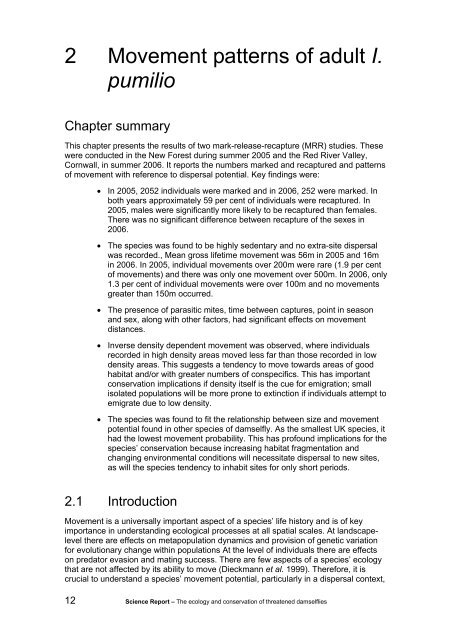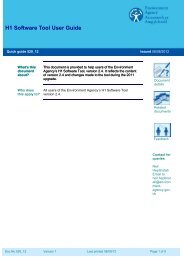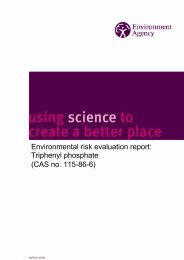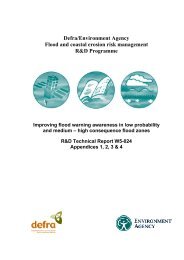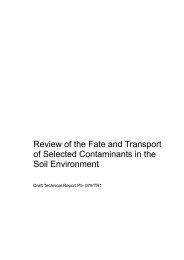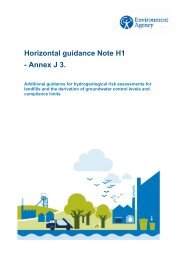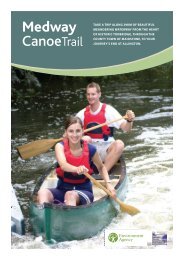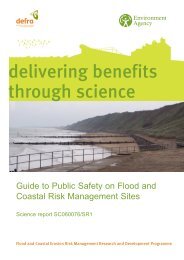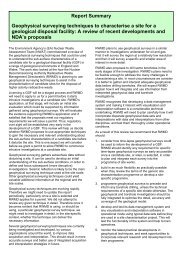The ecology and conservation of threatened damselflies
The ecology and conservation of threatened damselflies
The ecology and conservation of threatened damselflies
Create successful ePaper yourself
Turn your PDF publications into a flip-book with our unique Google optimized e-Paper software.
2 Movement patterns <strong>of</strong> adult I.<br />
pumilio<br />
Chapter summary<br />
This chapter presents the results <strong>of</strong> two mark-release-recapture (MRR) studies. <strong>The</strong>se<br />
were conducted in the New Forest during summer 2005 <strong>and</strong> the Red River Valley,<br />
Cornwall, in summer 2006. It reports the numbers marked <strong>and</strong> recaptured <strong>and</strong> patterns<br />
<strong>of</strong> movement with reference to dispersal potential. Key findings were:<br />
• In 2005, 2052 individuals were marked <strong>and</strong> in 2006, 252 were marked. In<br />
both years approximately 59 per cent <strong>of</strong> individuals were recaptured. In<br />
2005, males were significantly more likely to be recaptured than females.<br />
<strong>The</strong>re was no significant difference between recapture <strong>of</strong> the sexes in<br />
2006.<br />
• <strong>The</strong> species was found to be highly sedentary <strong>and</strong> no extra-site dispersal<br />
was recorded., Mean gross lifetime movement was 56m in 2005 <strong>and</strong> 16m<br />
in 2006. In 2005, individual movements over 200m were rare (1.9 per cent<br />
<strong>of</strong> movements) <strong>and</strong> there was only one movement over 500m. In 2006, only<br />
1.3 per cent <strong>of</strong> individual movements were over 100m <strong>and</strong> no movements<br />
greater than 150m occurred.<br />
• <strong>The</strong> presence <strong>of</strong> parasitic mites, time between captures, point in season<br />
<strong>and</strong> sex, along with other factors, had significant effects on movement<br />
distances.<br />
• Inverse density dependent movement was observed, where individuals<br />
recorded in high density areas moved less far than those recorded in low<br />
density areas. This suggests a tendency to move towards areas <strong>of</strong> good<br />
habitat <strong>and</strong>/or with greater numbers <strong>of</strong> conspecifics. This has important<br />
<strong>conservation</strong> implications if density itself is the cue for emigration; small<br />
isolated populations will be more prone to extinction if individuals attempt to<br />
emigrate due to low density.<br />
• <strong>The</strong> species was found to fit the relationship between size <strong>and</strong> movement<br />
potential found in other species <strong>of</strong> damselfly. As the smallest UK species, it<br />
had the lowest movement probability. This has pr<strong>of</strong>ound implications for the<br />
species’ <strong>conservation</strong> because increasing habitat fragmentation <strong>and</strong><br />
changing environmental conditions will necessitate dispersal to new sites,<br />
as will the species tendency to inhabit sites for only short periods.<br />
2.1 Introduction<br />
Movement is a universally important aspect <strong>of</strong> a species’ life history <strong>and</strong> is <strong>of</strong> key<br />
importance in underst<strong>and</strong>ing ecological processes at all spatial scales. At l<strong>and</strong>scapelevel<br />
there are effects on metapopulation dynamics <strong>and</strong> provision <strong>of</strong> genetic variation<br />
for evolutionary change within populations At the level <strong>of</strong> individuals there are effects<br />
on predator evasion <strong>and</strong> mating success. <strong>The</strong>re are few aspects <strong>of</strong> a species’ <strong>ecology</strong><br />
that are not affected by its ability to move (Dieckmann et al. 1999). <strong>The</strong>refore, it is<br />
crucial to underst<strong>and</strong> a species’ movement potential, particularly in a dispersal context,<br />
12 Science Report – <strong>The</strong> <strong>ecology</strong> <strong>and</strong> <strong>conservation</strong> <strong>of</strong> <strong>threatened</strong> <strong>damselflies</strong>


